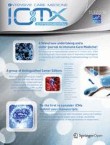Effects of sodium-glucose transporter-2 inhibition on systemic hemodynamics, renal function, and intra-renal oxygenation in sepsis-associated acute kidney injury
People with type 2 diabetes mellitus treated with sodium-glucose transporter-2 inhibitors (SGLT2i) have lower rates of acute kidney injury (AKI). Sepsis is responsible for the majority of AKI in critically ill...


